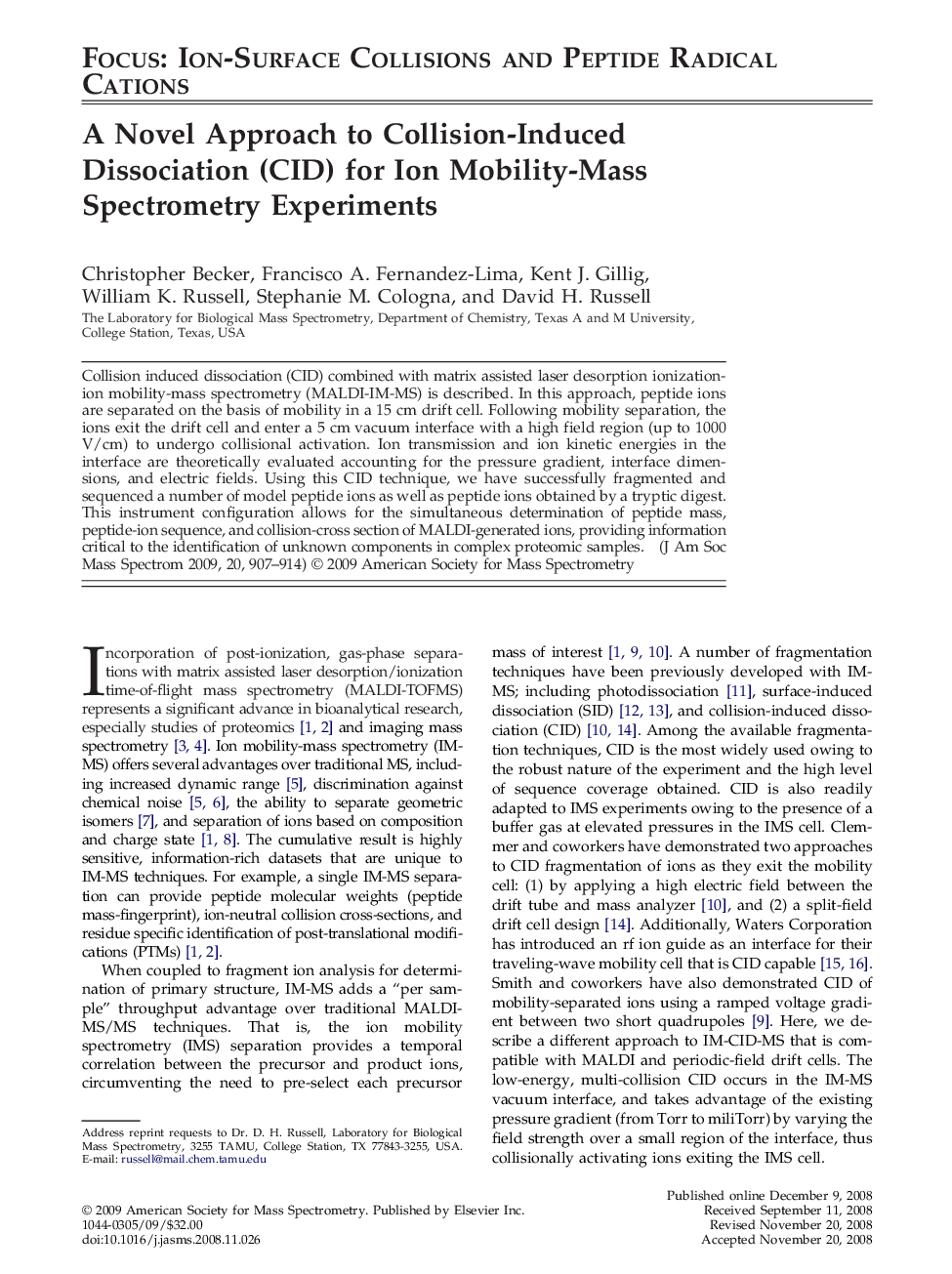| Article ID | Journal | Published Year | Pages | File Type |
|---|---|---|---|---|
| 1195263 | Journal of the American Society for Mass Spectrometry | 2009 | 8 Pages |
Collision induced dissociation (CID) combined with matrix assisted laser desorption ionization-ion mobility-mass spectrometry (MALDI-IM-MS) is described. In this approach, peptide ions are separated on the basis of mobility in a 15 cm drift cell. Following mobility separation, the ions exit the drift cell and enter a 5 cm vacuum interface with a high field region (up to 1000 V/cm) to undergo collisional activation. Ion transmission and ion kinetic energies in the interface are theoretically evaluated accounting for the pressure gradient, interface dimensions, and electric fields. Using this CID technique, we have successfully fragmented and sequenced a number of model peptide ions as well as peptide ions obtained by a tryptic digest. This instrument configuration allows for the simultaneous determination of peptide mass, peptide-ion sequence, and collision-cross section of MALDI-generated ions, providing information critical to the identification of unknown components in complex proteomic samples.
Graphical AbstractThe effects of pressure gradient, interface dimensions, and electric field strengths on CID in the interface region of an ion mobility mass spectrometer are presented.Figure optionsDownload full-size imageDownload high-quality image (118 K)Download as PowerPoint slide
